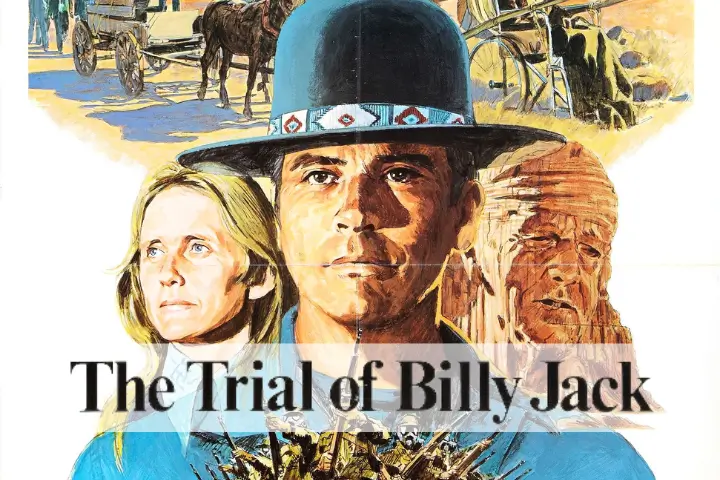The Billy Jack films are a series of movies that center around the character Billy Jack, a half-Indian, half-white ex-Green Beret and martial arts expert. Played by actor Tom Laughlin, Billy Jack is an iconic figure who stands up against oppression and fights for what he believes is right. The character became a symbol of the counterculture era, resonating with audiences for his defense of underrepresented communities and his embodiment of non-traditional heroism.
Understanding Billy Jack movies in order enhances the narrative experience, tracing the evolution of the protagonist and the thematic progression of the series. The movies were released between 1967 and 1977, beginning with “The Born Losers” and concluding with “Billy Jack Goes to Washington,” encompassing themes of justice, freedom, and social change. Watching the movies sequentially provides insight into the recurring characters and the development of the overarching story.
For fans of classic cinema or those who appreciate films that challenge societal norms, the Billy Jack series offers an engaging portrayal of a lone hero’s journey. These movies have maintained a cult following and continue to be recognized for their influence during a pivotal time in American film and culture.
The Creation of Billy Jack
The character Billy Jack emerged as a cultural icon in the early 1970s, defined by his unwavering sense of justice and skill in martial arts. He is the embodiment of the era’s social and political consciousness.
Concept and Development
Tom Laughlin conceived the idea for Billy Jack as a reflection of the zeitgeist. The late 1960s and early 1970s were rife with sociopolitical turmoil, and Laughlin sought to create a protagonist who would embody the fight for underrepresented groups and stand against oppression. The first film to introduce Billy Jack, “The Born Losers” (1967), established the character as a renegade hero fighting for what’s right, resonating with audiences who were eager for change.
Tom Laughlin’s Vision
Laughlin’s vision for the character went beyond entertainment; he aimed to inspire social change. Through the lens of Billy Jack, Laughlin addressed issues such as Native American rights and the anti-war sentiment. He didn’t just write and direct; Laughlin also starred as the titular character, fully investing himself in the role both on and off the screen. By incorporating real-world issues into his storytelling, Laughlin offered a form of cinematic activism that encouraged viewers to rethink their values and consider broader societal complications.
All 4 Billy Jack Movies in order
1. The Born Losers

“The Born Losers” marks the first appearance of the culturally iconic character Billy Jack, first introduced to audiences in 1967. Directed and written by Tom Laughlin, who also played the titular role, the film establishes the character’s presence in the cinematic world.
Set in a small Californian coastal town, the movie pits Billy Jack, a half-Indian Green Beret Vietnam veteran, against a menacing motorcycle gang. Despite seeking a life of solitude, Billy Jack’s sense of justice places him in direct conflict with the gang.
Aspect
- Character
- Conflict
- Goal
- Setting
- Year
Description
- Billy Jack
- Against a motorcycle gang
- Desires peace, compelled to fight for justice
- Small California beach town
- 1967
Though the concept of a vigilante hero was not new, Billy Jack’s mixed heritage and the themes of social justice addressed in the movie spoke to the socio-political climate of the era. This was a time when countercultural movements were prominent, and the film’s message resonated with many viewers.
This film not only introduced Billy Jack’s character but also paved the way for subsequent movies in the Billy Jack series, creating a framework for understanding the character’s motivations and the social issues he confronts. The actions and character development in “The Born Losers” set the stage for the following films, establishing a sequence for viewers to appreciate Billy Jack’s narrative progression.
IMDb Rating 5.9/10
2. Billy Jack

Billy Jack is the eponymous character of a sequence of films that resonated with audiences in the early 1970s. Portrayed by Tom Laughlin, Billy Jack is a half-Native American, former Green Beret and Vietnam War veteran who stands up for progressive ideals and defends the rights of indigenous communities and other marginalized groups.
The character first appeared in “The Born Losers” (1967), which introduced audiences to his fighting skills and sense of justice. Despite being the first released, it is often regarded as a precursor to the more focused story of Billy Jack that unfolds in the following films.
The second film, which takes the name “Billy Jack” (1971), is where the character solidifies his place in American cinema. It is during this film that his iconic status as a countercultural symbol is cemented, showcasing his defense of a progressive school against conservative opposition.
In “The Trial of Billy Jack” (1974), Billy Jack faces consequences for his actions in the prior film, with the narrative deepening into themes of governmental oppression and personal integrity. As the story progresses, an expanded view of the Freedom School provides more context to the societal issues confronted by Billy Jack.
The concluding film, “Billy Jack Goes to Washington” (1977), takes a more political angle, with the character navigating the intricacies of the U.S. political system. Although less successful than its predecessors, it completes the narrative arc by presenting Billy Jack in a broader societal framework.
The films are noted for their blend of action and social commentary, and they became emblematic of a time when American society grappled with substantial changes. For more information on the series, one can visit The Reading Order where the sequence is discussed.
IMDb Rating 6.2/10
3. The Trial of Billy Jack

“The Trial of Billy Jack” is a sequel in the series of Billy Jack films, released in 1974 following the success of the 1971 film “Billy Jack.” Directed by Tom Laughlin, who also stars in the titular role, the movie continues the story of Billy Jack, a Green Beret Vietnam War veteran.
Plot Elements:
Runtime and Reception:
Character Development:
Cultural Impact:
IMDb Rating 4.6/10
4. Billy Jack Goes to Washington

In the cinematic chronology, “Billy Jack Goes to Washington” represents the fourth installment of the Billy Jack series. The 1977 political drama film stars Tom Laughlin, who also directed and co-wrote the movie. Unlike its predecessors, this film experienced limited success due to restricted screenings and it did not receive a general theatrical release. Nevertheless, its availability has expanded over time, and it is now accessible for a wider audience.
Synopsis
- Protagonist: Billy Jack
- Premise: Appointment as a U.S. Senator
- Conflict: Proposes a bill challenging the establishment
The film’s narrative follows Billy Jack after he gets appointed to the United States Senate, where he is expected to align with party politics. Defying expectations, he introduces a bill for funding a national youth camp, a move that puts him at odds with plans for a nuclear power plant proposed on the same land. His actions shock his peers and invoke a struggle against political corruption.
The storyline bears resemblance to Frank Capra’s 1939 film, “Mr. Smith Goes to Washington,” yet it retains unique elements specific to the Billy Jack franchise. It explores the titular character’s journey as he navigates the treacherous waters of Washington D.C.’s politics. In facing systemic injustices, Billy Jack stands as a figure of integrity and courage.
IMDb Rating 4.4/10
Character Analysis
The character of Billy Jack, portrayed by Tom Laughlin, is a complex figure with a deep connection to social causes and personal principles. This analysis breaks down his character traits and the recurring themes present throughout the film series.
Billy Jack’s Persona
Billy Jack is characterized by his dual heritage as a half-White, half-Native American. He is a former Green Beret and a Vietnam War veteran, embodying stoicism and martial prowess. His unique persona is marked by a distinctive hat symbolizing his nonconformist attitude. Billy Jack practices hapkido, showcasing impressive self-defense skills which he uses primarily for defensive purposes. He speaks softly but carries with him a strong sense of justice, preferring peace yet willing to fight when necessary for the oppressed, particularly Native Americans which he feels a strong kinship towards.
Main Themes and Motifs
The Billy Jack films explore significant social themes, sharply focusing on the defense of the underprivileged and civil rights issues. The character consistently faces opposition from figures representing authoritarian and corrupt establishments. The recurring motifs include:
The films utilize the character of Billy Jack to illustrate the dichotomy between societal ideals and the harsh realities of marginalized groups, emphasizing the personal conflict between seeking peace and needing to engage in violence to promote justice.
Critical Reception and Legacy
The Billy Jack film series not only gained substantial box office numbers but also etched a place in the cultural consciousness of the 1970s America, dividing critics and sparking conversations about its socially charged themes.
Box Office Success
The Billy Jack films were notable for their financial success, especially considering their independent production status. The first sequel, Billy Jack, released on May 1, 1971, went on to become a substantial box office hit despite initial studio reluctance. Following its unique promotion strategy and word-of-mouth, the film’s success cemented its place in the list of highest-grossing films of the year.
Critical Reviews
Critical response to the Billy Jack series was mixed. While some critics found the films’ social commentary on issues like civil rights and Native American advocacy compelling, others critiqued the execution, finding it heavy-handed or melodramatic. The protagonist’s depiction as a counter-culture hero received praise for challenging conventional genre tropes, often highlighting Tom Laughlin’s performance as a key factor.
Cultural Significance
The series became a cultural touchstone, capturing the zeitgeist of its time by addressing themes of peaceful protest against corruption and racism. Often cited in discussions about cinema of the era, the Billy Jack films inspired a fervent fan base and became symbols for a generation seeking change. These movies also raised the profile of issues affecting Native Americans, contributing to a broader social dialogue.
Frequently Asked Questions
What is the correct sequence to watch the Billy Jack movies?
The Billy Jack films should be watched in the order of their release. First is The Born Losers (1967), followed by Billy Jack (1971), then The Trial of Billy Jack (1974), and finally Billy Jack Goes to Washington (1977).
Where can I find the full Billy Jack movie to watch?
The Billy Jack movies are periodically available for purchase or streaming on various digital platforms. Interested viewers can check online retailers or streaming services for the latest availability.
What is the plot of ‘The Legend of Billy Jack’ movie?
Currently, there is no movie titled ‘The Legend of Billy Jack.’ It appears there may be some confusion with the existing films in the series. The viewer can find information about the plots of each of the released Billy Jack movies through their respective resources.
Is the character of Billy Jack based on a real person?
The character of Billy Jack is fictional and serves as an embodiment of cultural themes and social issues. Tom Laughlin, who played the role, modeled Billy Jack’s vigilantism and defense of the underdog after his own political and social beliefs.
How does ‘The Trial of Billy Jack’ fit into the series?
The Trial of Billy Jack (1974) continues the storyline from the 1971 film ‘Billy Jack’ and follows the main character as he stands trial and confronts further corruption and moral challenges.
What is the total number of Billy Jack movies that were produced?
There were four Billy Jack movies officially released. A fifth film, ‘The Return of Billy Jack,’ was planned and partially filmed but was never completed.


